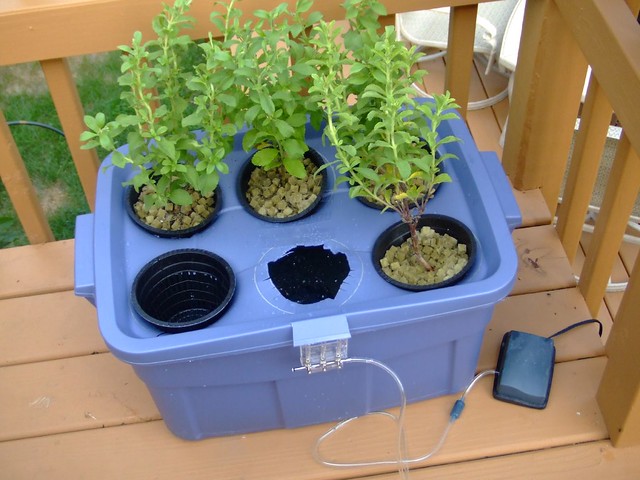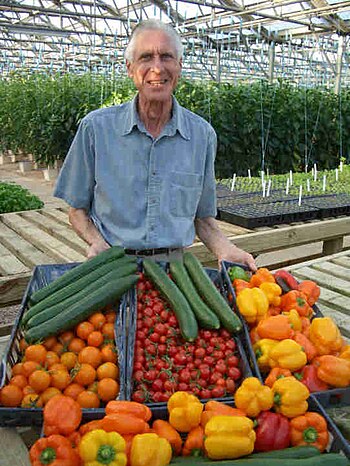 |
| Rix Dobbs' home-made nutrient film technique hydroponics system (Photo credit: Wikipedia) |
Hydroponics is a Latin term, which literally means “working water.” What it means to horticulture is the growing of plants without soil. Hydroponic gardening is an exciting field that offers solutions to several problems faced in the world of food production. For impoverished people who live in terrain or climate inhospitable to agriculture, hydroponics offers a means of growing food. In areas where food is traditionally produced, but where fields are overcrowded or stripped of their nutrients, hydroponics is a way food can be produced using a minimum of space and resources.
Hydroponic growth leads to an increase in production over traditional farming in two ways. For one, hydroponic gardening just plain saves space. Plants can be placed much more closely together than in traditional fields; as many as four times as many plants can be grown in the space using hydroponic techniques as opposed to traditional methods. Secondly, hydroponics eliminates many of the problems associated with traditional farming that leads to sickly, damaged, or wasted crops.
Because hydroponic growers produce their own nutrients mixes, it takes the guesswork out of figuring out which plants will grow best in a field and what nutrients need to be added to the soil. The nutrient mixture is the right one for the plant, in the right ratios, every time. The fear of soil-based diseases is eliminated, because, of course, there is no soil. These two factors come together to make hydroponics an extremely efficient method of food production.
Hydroponics is also environmentally sound. The water consumption in hydroponic growing is significantly less than traditional growth methods; in many cases, hydroponic crops use a tenth of the water of equivalent traditional crops. Also, the water that is used is used more effectively; in hydroponics, weeds do not steal part of the crop’s water supply.
The benefits are not without their costs, however. The environmental good that hydroponics produces with its decreased water consumption is somewhat negated by the amount of energy needed to support hydroponic growing. Much hydroponic growing happens in greenhouses, where significant amounts of electricity are used trying to give the hydroponic plants all the light they need.
The electricity consumption is environmentally damaging and expensive, and expense is another area where hydroponics comes under the gun. The nutrient mixtures and growing mediums used can be very expensive. While research is happening to try and bring the costs down, and there are some promising leads, like the field of aquaponics, hydroponics is currently financially prohibitive for some.
There is a common misconception that hydroponics produces organic food. While it is possible to grow organic food through hydroponics, this is the exception and not the rule. Most growers used pesticides on their hydroponic crops. Though the pesticides used in hydroponics do not run-off and pollute the surrounding environment like the pesticides used in traditional fields, they are still on the plants themselves.
The field of hydroponics is filled with promise, and much research is being devoted to solving the concerns that currently stop more farmers from going hydroponic. Until these problems are solved, however, farmers and amateur gardeners alike will need to carefully weigh the pros and cons of hydroponics before making the leap to that style of growing.






